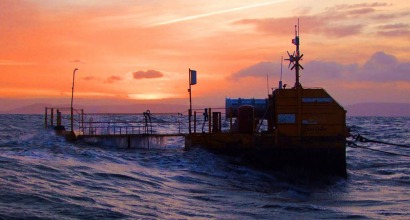
The device will replace conventional magnetic materials with new materials made using alternative technology. The aim of the MAGNETIDE project is to develop a new type of generator that transforms the mechanical energy of the tides into electric energy. Researchers from Universidad Carlos III in Madrid (UC3M) have modified the generator’s design so that components manufactured using Powder Injection Moulding (PIM) can be installed. This in turn will reduce the cost of the systems as well as increasing their efficiency by up to 30 percent.
“These generators use magnetic components that we are producing using PIM technology, which turns out to be more versatile when it comes to modifying the compositions and makes it possible to get the parts for a lower price” said professor José Manuel Torralba, of the university’s Powder Technology Research Group (Grupo de Tecnología de Polvos -GTP). Professor Torralba is coordinating UC3M’s participation in this project.
Powder injection moulding is an advanced powder metallurgy technology that combines the advantages of plastic injection moulding and powder technology. It is becoming increasingly popular in the manufacture of complex parts with a high rate of production and is similar to making bread in an oven except that it uses alloys of metallic powders rather than flour. These metallic powders “bake” in moulds and produce milimetrically exact parts. In the MAGNETIDE project the scientists are studying the best combination of metallic powders with a magnetic character, such as iron, silicon, cobalt, nickel and various others. The aim is to be able to inject these materials into a polymer plastic mould that will allow them to create complex parts that are difficult and expensive to produce mechanically.
The process has been researched thoroughly and is the subject of a paper the Madrid researchers recently published in the “International Journal of Microstructure and Materials Properties”. The paper describes the different stages in the manufacturing process and the solutions that it has provided with respect to the Powder Technology Group.
“The great advantage of this technology is that once you design the material, by modifying the mould, it is easy to manufacture millions of pieces that are exactly the same, in a manner that is simple, fast and quite inexpensive” added Professor Torralba.
The project should be completed in 2015 when the scientists expect to produce the first prototypes of generators made with this technology. These devices could be used for wind power and other renewable energy technologies and could also be used in areas where there are strong tidal currents, such as the west coast of Canada, Southeast Asia and Australia, the Bosporus and, in the case of Spain, the Strait of Gibraltar.
MAGNETIDE is supported by the Seventh Framework Program, the European Union’s main instrument for funding research. It is being carried out by a consortium that brings together seven scientific companies and institutions from six European countries. These include three small to medium sized businesses (SME’s): ATARD (Turkey), which is coordinating the project; ITB Precisietechniek B.V. (The Netherlands); and Tidal Sails (Norway). In addition, four research organizations are participating in the project: Instituto Superior Técnico (Portugal), Istanbul Teknik Universitesi (Turkey), TWI (United Kingdom) and Universidad Carlos III of Madrid (Spain).
For additional information:

